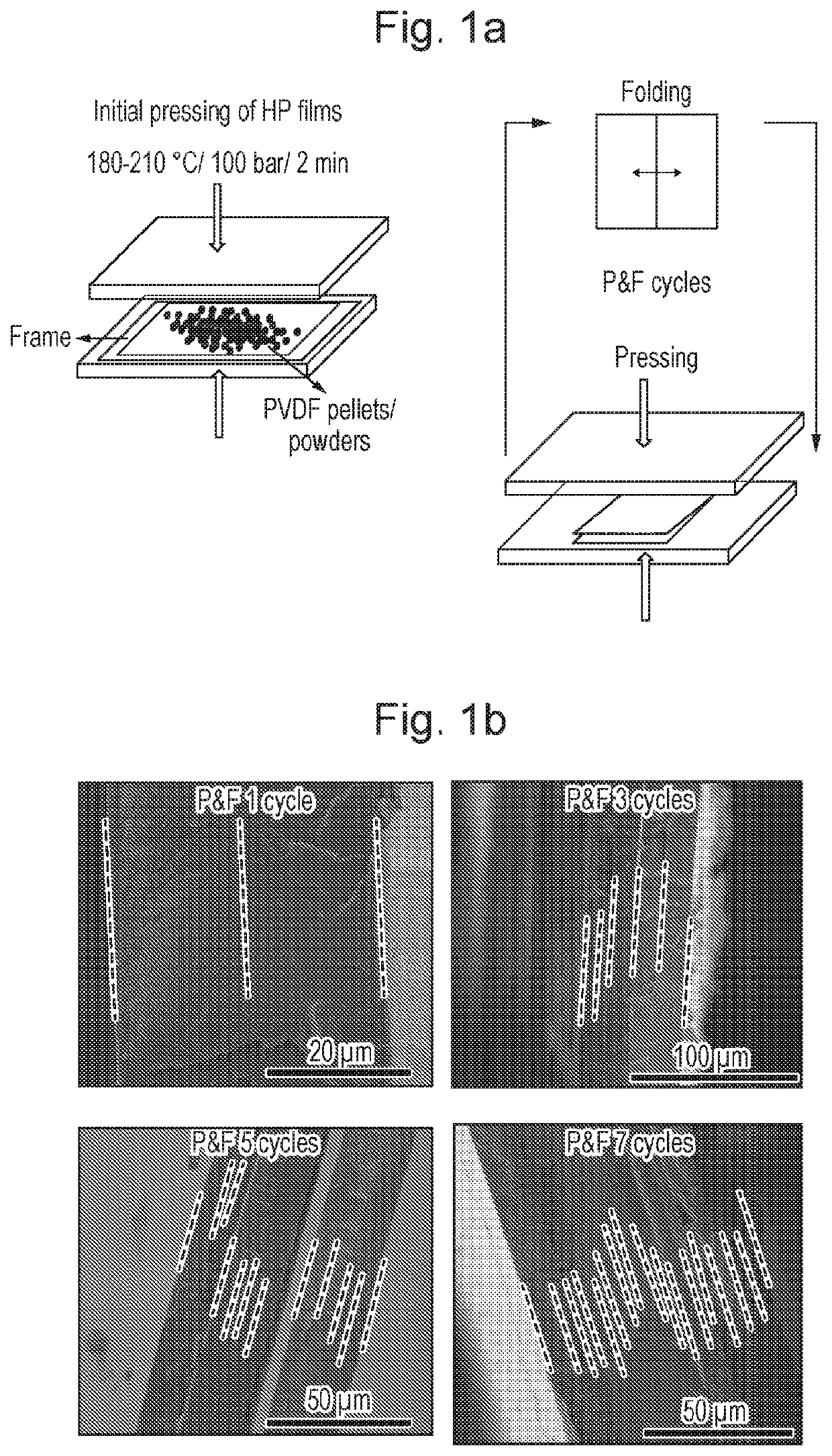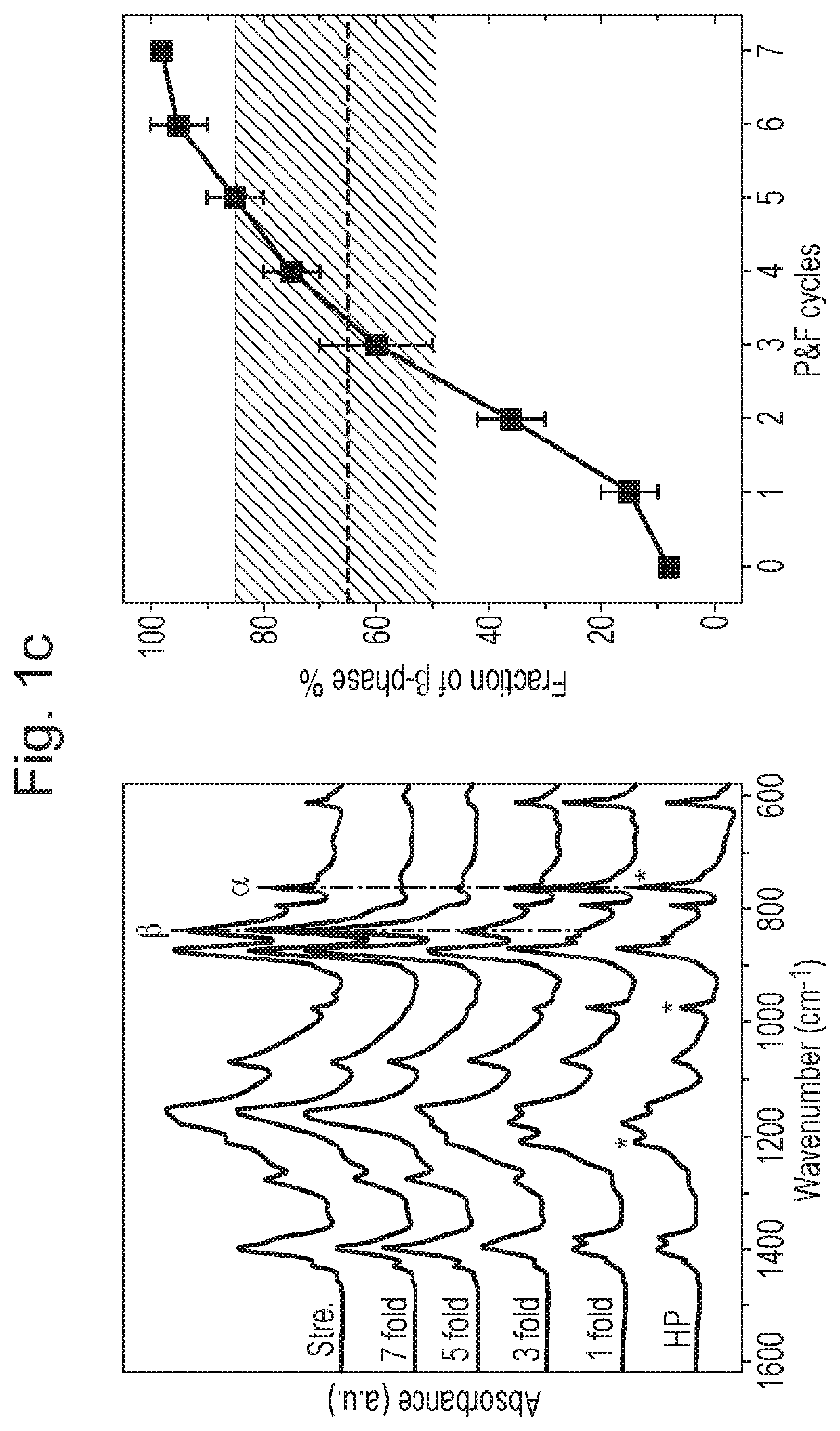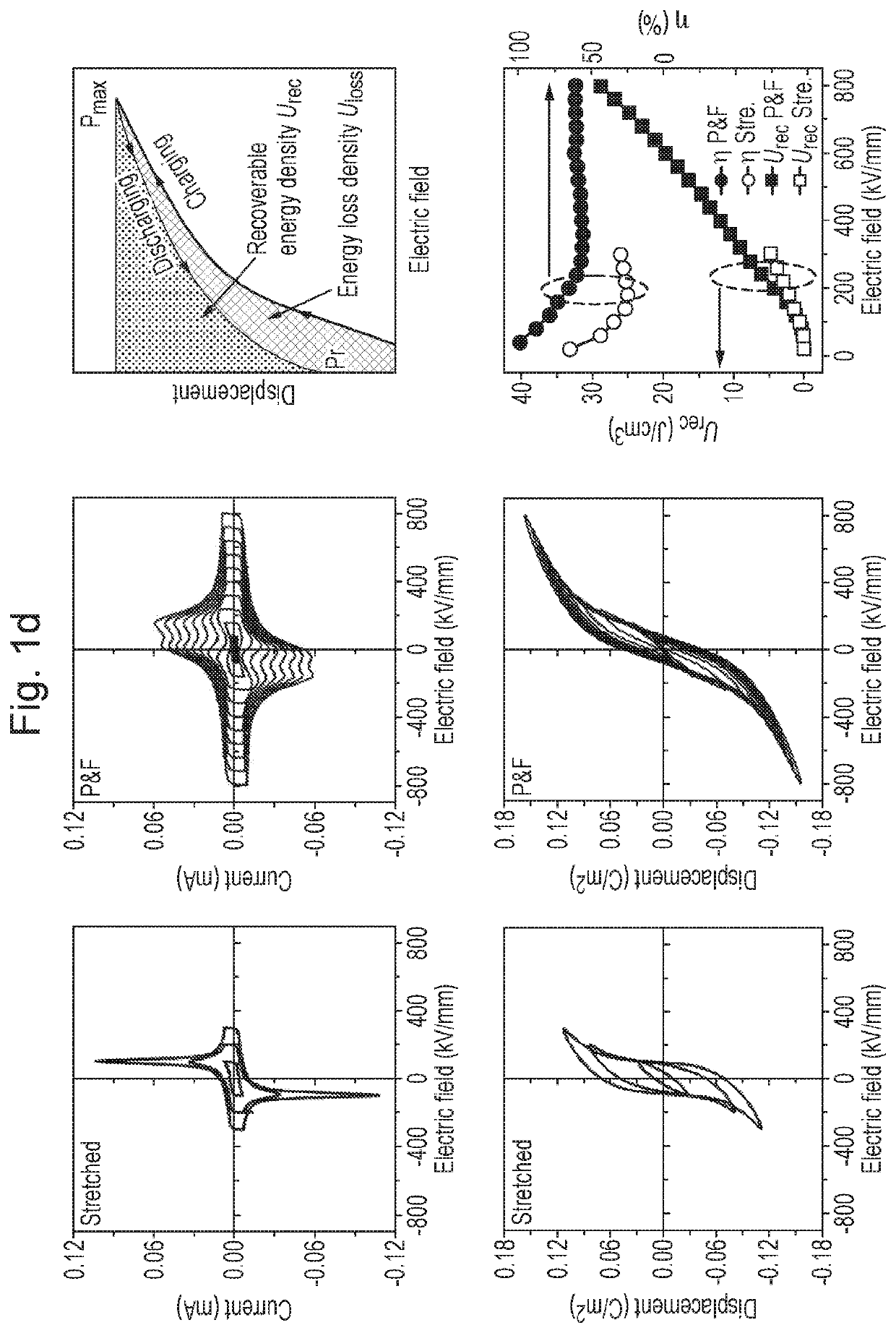Process for producing a poly(vinyliden fluoride) dielectric material for capacitor with rich beta cristalline phase
a technology of poly(vinyliden fluoride) and dielectric material, which is applied in the field of dielectric material to achieve the effect of ultra-high energy density
- Summary
- Abstract
- Description
- Claims
- Application Information
AI Technical Summary
Benefits of technology
Problems solved by technology
Method used
Image
Examples
example 1
n of P&F Films with Stretched and HP Films
[0157]Press and folded, hot pressed films were produced as discussed above, using the PVDF with MW of 670-700 kg, / mol, and folded at a temperature of 165° C. Stretched films were solid-state drawn to failure at 100° C. and 10 mm / min, which was reported to be the optimum conditions for obtaining the β-phase in previous work [14].
[0158]Cross-sectional SEM images of P&F samples after different numbers of folding cycles are shown in FIG. 1(b). A fine and discrete layered structure was generated during P&F.
[0159]The evolution of the crystalline phase was shown by the FTIR absorbance spectrum (FIG. 1(c)). The initial hot pressed (HP) films mainly crystallized into α-phase with characteristic peaks at 764 cm−1, 975 cm−1 and 1212 cm −1 highlighted by asterisks and transformed to about 95% β-phase after seven folding cycles. The horizontal shaded area indicates the reported values of fraction of β-phase in commonly stretched PVDF films, and the dashe...
example 2
ve Processing Conditions: Stacking and Pressing
[0162]A variety of films were produced using the processes set out below. Unless otherwise specified, all of the following films were produced using PVDF having MW: 670-700 kg / mol. Fraction of β-phase for all of these films is shown in FIG. 2(d) and FIG. 6.
[0163]Films with similar thickness (˜0.2-0.25 cm), but with different numbers of layers: a film with a single layer and a film with 6 layers, were produced under the same pressing conditions, 165° C. and 240 bar and cold water quenching in the presence of pressure. Both films were subjected to three different pressures—120 MPa (5 cm×5 cm), 667 MPa (3 cm×1.5 cm) and 3000 MPa (1 cm×1 cm)—varied via controlling the area of samples (see FIG. 2(d).
[0164]Films with the same dimensions (3 cm×1.5 cm×(0.2-0.25) cm), but composed of different layers: a film with a single layer, a film with 2 layers, a film with 4 layers, a film with 6 layers and a film with 8 layers, were pressed at the same co...
example 4
ve Processing Conditions: Rolling and Pressing
[0178]A hot-pressed PVDF film was prepared by compressing 4.0g of PVDF powder with MW: 670-700 kg / mol at 220° C. and 150 kN for 5 minutes followed by cooling with cold water down to 50° C. under constant pressure. A round film with diameter of ˜10 cm and thickness of ˜300-400 μm was obtained. The film was rolled into a roughly circular tube (see FIG. 11(a) and (b)) to create continuous boundaries (11 boundaries).
[0179]The tube was then compressed at 375 MPa and 165° C., and annealed at this temperature for 10 minutes before cooling to 50° C. with cold water, whilst under pressure. The fraction of β phase in the one-step roll-pressed film reached ˜80%, which is much higher than corresponding zigzag-pressed (˜71%) and cut-pressed (˜46%) films after a single round of layering and pressing, as demonstrated by the FTIR and XRD results in FIG. 11(c) and (d).
[0180]As discussed below, press and folding at low temperature prompts the accumulation...
PUM
| Property | Measurement | Unit |
|---|---|---|
| electric field | aaaaa | aaaaa |
| recoverable energy density | aaaaa | aaaaa |
| recoverable energy density | aaaaa | aaaaa |
Abstract
Description
Claims
Application Information
 Login to View More
Login to View More - R&D
- Intellectual Property
- Life Sciences
- Materials
- Tech Scout
- Unparalleled Data Quality
- Higher Quality Content
- 60% Fewer Hallucinations
Browse by: Latest US Patents, China's latest patents, Technical Efficacy Thesaurus, Application Domain, Technology Topic, Popular Technical Reports.
© 2025 PatSnap. All rights reserved.Legal|Privacy policy|Modern Slavery Act Transparency Statement|Sitemap|About US| Contact US: help@patsnap.com



